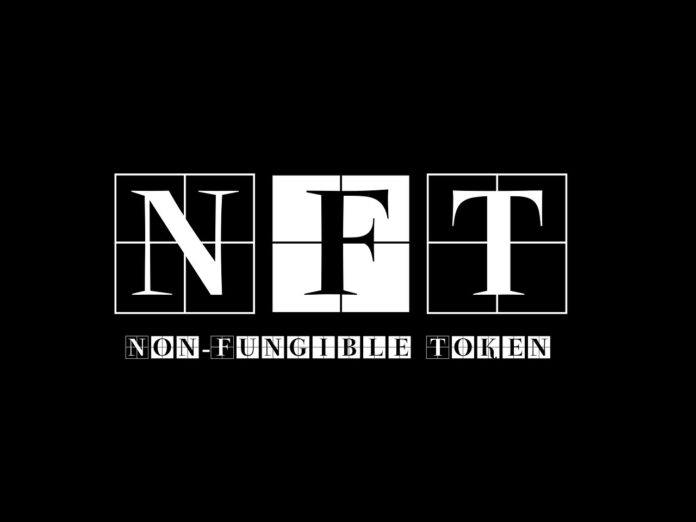Since its deployment on the market, Ethereum made it possible for innovative applications to be developed in a safe and high-tech ecosystem. Although it started off as a cryptocurrency, the blockchain backing it up provided developers the means to create dApps, DAOs and the late NFTs that broke the internet. Of course, this affected the Ethereum price to reach competing levels with Bitcoin, the first and most long-standing digital asset on the market, but its real value stands in smart contracts and network tools.
Ethereum is also famous for multiple updates of the blockchain. The latest one, Merge, claimed to have made the network more sustainable and almost diminished carbon emissions related to Ethereum mining while also decreasing gas fees and prices. However, Ethereum’s roadmap still has a long way to go until it closes the update cycle, so the one we’re talking about in this article is about changing how NFTs are created.
What is the ERC-4337 upgrade?
ERC-4337 comes from “Ethereum Request for Comment 4337”. It is intended to enable wallets to work like smart contracts so that users can customize their authorization logic. This technology will be more accessible to individuals unfamiliar with crypto but interested in NFTs.
The update was proposed by Ethereum’s creator back in 2021, and its purpose was to make buying, storing and securing NFTs easier and more efficient. Considering how complex and messy wallet creation is for those engaging with the Web3 world, this change needed to occur.
The process included taking into account seed phrases and dealing with a not-so-friendly user interface. This is why ERC-4337 has been deployed to handle the following challenges.
The recovery of lost private keys
Private keys are fundamental to digital wallets because they act like passwords but are also responsible for authorizing transactions. Digital wallets provide private keys and create public keys for the wallet’s address, so they’re like a multi-tool. Unfortunately, if wallet holders lose their private keys, they’ll no longer get access to their coins, which will be lost forever.
The ERC-4437 will help ensure this won’t happen through a system called “social recovery,” which allocates the right to restore access to a digital wallet to another person that the wallet holder.
Wallet security
Usually, digital wallets are secured through a seed phrase, a random combination of words used to access or recover crypto. Again, if someone loses or forgets the seed phrase, access to the wallet is denied forever.
Luckily, this upgrade brings something new, allowing individuals to use two-factor authentication and biometrics instead of the seed phrase to secure their wallets. Seed phrases will still provide another layer of security to the wallet, increasing one’s trust that their funds are in a safe place and can be accessed no matter what.
Making trading easier
Another challenge with NFT is the need to track everything from metrics to mints when collecting and trading. Users must always be on top of the competition by analyzing an NFT’s condition and emergence to benefit from its real value and not lose it.
That’s why the ERC-443 upgrade will introduce the concept of automated trading, so individuals can better control their NFT assets with features like AI trading or a monthly spend limit through which trading will become more accessible and more productive. People will be able to focus on what’s more important, like gathering enough information faster to make rapid decisions.
Fewer gas fees on transactions
Ethereum is known for having expensive gas fee transactions, for which numerous updates and fixtures of the network have been included to make the platform unrestricted to anyone. However, the cost of minting NFTs can sometimes reach unbelievable prices in accordance with the type of blockchain or the costs of different transactions.
Therefore, the update will make it possible for users to benefit from gasless transactions, so NFT collections and DAOs have the possibility to promote gas fees. This will not only make transactions more affordable but also faster and more efficient.
The ERC update and the road to NFT adoption
While these updates don’t seem revolutionary in the Web3 world, Ethereum is among the first to enable them to make NFTs more mainstream and allow anyone to access them. Despite their boom in 2021, NFTs are still a niche sector that only a specific target audience knows.
At the same time, even if potential investors are interested in acquiring NFTs, they’re blocked by the complex processes of creating a digital wallet and dealing with NFT organizing. So, this update is about to change it all and make these non-fungible assets available to the public.
Still, it’s a long way to go until NFTs are as popular as cryptocurrencies because while they’re an innovative tool, they might not have specific use cases. Of course, NFTs have a varied array of purposes, such as creating games, music and art, but when it comes to investments and trading, they’re targeted only by a few people who want to diversify their portfolios.
Should investors include NFT in their portfolios?
It’s a known golden rule in crypto investing that a digital wallet should be used to diversify one’s portfolio to minimize risks and increase income in the long run. In this sector, plenty of digital coins are helpful in this matter, like large-cap coins (Bitcoin) or small-cap assets, tokens, stablecoins and DeFi projects.
But purchasing tokenized assets, from real estate and art to collectibles, ensures the potential for high returns if they’re held for longer, increasing their value. This strategy also protects users from inflation since the portfolio cannot go down with a multitude of assets, which is usually the case for those who invest only in Bitcoin or another singular investment.
Bottom Line
Ethereum is one of the most innovative cryptocurrencies out there, but its blockchain powers it up. With many updates on the go and a long roadmap, the network is currently working on another update targeting the development of NFTs and their access to the open world.



